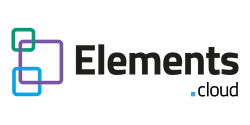
[READ TIME 2 mins]
A simple enough question. My children understand that if I am in my office, or I walk into the house after a business trip and am on the phone that I may still be at work.
Have you noticed that the term “I am at work” has become a meaningless term for a huge swathe of the workforce? For those who are self-employed, road warriors (sales and consultants), mobile workers and senior executives with staff spread across the world, work happens “any place, anytime, anywhere” as the Martini drinks adverts put it so well.
Work is an activity, not a location. But lazy management is about seeing people “at work”. Counting heads, not counting results. This needs to change and move to a model where people are measured on their output but this requires an intimate view of what people should be doing (process).
Work is an activity, not a location
Technology is making work more portable for lots of people, summarised in 3 words: Cloud, Social, Mobile.
- Cloud means that companies are happy to put more and more applications and data in the cloud so that being connected to the corporate network or VPN is not critical. Interestingly, even “Big-Pharma” is now agreeing to put mission critical, secure process information in the cloud. However, the networks are not quite ready for 100% cloud all the time.
- Social means that with social networking tools and web conferencing people no longer need feel as isolated. I remember one of the reasons for going to the office was “You need the office, the office needs you”. It was about social interaction.
- Mobile includes smart phones and tablets. They can be used to catch up, connect, engage, transact without waiting to boot up a laptop or – increasingly – can be used instead of a laptop.
So technology is blurring the distinction between work and non-work. People talk about work-life balance. Before work-life balance was about leaving the office earlier. Now there is no office to leave. So work-life balance is even more important to get a grip on. Incidentally, work-life suggests that life only occurs outside work, and that is a sad indictment on most organisations. Work can be fun. Not “happy-clappy laugh all day long”, but valuable and rewarding. Recent research has shown that what motivates staff far more is feeling that they have made a difference and made progress, and it is not money.
The new world of work is also blurring corporate boundaries. Outsourcing, shared services and sub-contracting arrangements are now possible – work mash-ups – enabled by technology. Suppliers become a critical part of the supply chain. A point that UPS makes clearly in their recent ad campaign We love logistics. But we need to make sure that these artificial boundaries are not visible to the customers, who themselves are becoming part of the supply chain. Just this week I was a grocery store check-out operator, a book retailer order entry clerk and an airline check in and baggage handler. All unpaid and untrained self-service.
But the changes I am talking about have been creeping up on us. There has not been any one momentous technological breakthrough. Therefore the changes have been gradual. The work-life balance is tipping more and more toward work. It is like the story of the frog boiled to death. The premise is that if a frog is placed in boiling water, it will jump out, but if it is placed in cold water that is slowly heated, it will not perceive the danger and will be cooked to death. So what are the implications of these changes?
The implications
These changes have been gradual and, like the frog, we may not even have noticed
Business redesign
Business leaders need to recognize these changes and think about how to redesign businesses to exploit the potential opportunities. That means the top down view of the operational processes. But equally it means considering how staff are measured. Managers cannot be lazy and use the old metrics of ‘hours in the office’. They need to really understand what they want people to do so that they can choose measures that motivate and reinforce the behaviors they need. And that again starts with a true end to end understanding of the process. And by end to end I mean including 3rd parties and the customer.
Cost reductions
Staff can spend less time traveling in rush hour to a centrally funded location. This means that hot desking can be used to reduce total office space costs. The employee spends less. The company spends less. However, companies need policies on what is an acceptable home office. Sharing the kitchen table with kids doing their homework or a new born probably isn’t the right work environment. Policies need to be in place around what set up costs and on-going costs can be charged to the company and the employee’s tax implications. The downside is that employees can easily become isolated and managers need to work harder on creating opportunities to get collective face time with their teams
Greener
Less traveling must have a positive effect on the plant and the green credentials of the company. Interestingly the greatest positive effect of a greener company is in recruitment. The new workforce, Gen Y, is more sensitive to the corporate credentials of the company they are joining. Forward thinking approaches on flexible working and green issues enables employers to attract the top talent.
Happier
Happier staff are more productive. Fact. More flexible working can help reduce stress which is generated at work, or more often the strains put on individual’s home lives due to work pressures. Control is the opposite of stress. The new working patterns give control back to employees and can accommodate raising children, caring for elderly or ill family, study or a wander lust.
Happier, settled staff are more productive, less likely to leave, and more likely to contribute to business improvements. All of which has a positive effect on the culture of the company which directly reflects on the clients. A great culture, work ethic and world class processes and metrics together make a killer company. Tiger blood runs in its veins as Charlie Sheen would say.
Are you fortunate enough to work for the company I have described? I certainly feel that I do and the challenge is that it doesn’t feel like I’m at work. So with the current technology it is easy to be seduced in to working every hour that exists and ignoring everything else.
Now that I live in San Francisco I start work in my home office at 6am to increase the overlap with Europe. So it is very easy just keep going and not notice that it is early evening.
I will sign off with a quote from a Successories picture on my home office desk which sums it up:
“A hundred years from now it will not matter what my bank account was, the sort of house I lived in, or the kind of car I drove….but the world may be different because I was important in the life of a child”.
1 Likes



